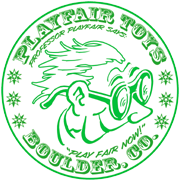Tundra is the name given to the vast expanses of land without trees that exist in the northernmost areas of the world. I love the tundra. I've spent much of my life in this land of wild beauty. I used to study the ways in which the tiny arctic plants were changing as our climate warmed. Although from one year to the next they appeared to be pretty much the same, the data and measurements that my students and I collected told another tale - things were changing, and fast.
Now our beautiful is north is truly in peril, as the climate is warming so quickly that the even the arctic ocean ice is disappearing. This is more than just sad. This is a tragedy that will impact us in ways we have not yet imagined. Polar bears, one of the most majestic (and OK, sure, having worked in their world for a while I can say that they are definitely SCARY, too) and beloved animals of the earth, are truly in peril. Do you understand why this is? Because polar bears live, basically, on the ice. Although they sometimes come ashore for awhile, to rest, or some even may live along the coast, their main food source are the seals and fish that live under the ice.
This is not so independent of you, dear reader, as you may think! Here's a story for you:
This is a house. This a kid who lives in the house. This is the light that lights up the house where the kid lives. This is the the electric switch that turns on the light that lights up the house where the kid lives. This is the coal (made of an element called "carbon") that generates the electricity that flows through the switch that turns on the light that lights up the house where the kid lives. These are the carbon dioxide molecules that escape when the coal burns that generates the electricity that flows through the switch that turns on the light that lights up the house where the kid lives. This is the atmosphere that accumulates the carbon dioxide molecules that escape when the coal burns that generates the electricity that flows through the switch that turns on the light that lights up the house where the kid lives. This is the heat that is trapped in the atmosphere that accumulates the carbon dioxide molecules that escape when the coal burns that generates the electricity that flows through the switch that turns on the light that lights up the house where the kid lives. This is the arctic ice that melts from the heat that is trapped in the atmosphere that accumulates the carbon dioxide molecules that escape when the coal burns that generates the electricity that flows through the switch that turns on the light that lights up the house where the kid lives. These are the polar bears that (used to?) live on the arctic ice that melts from the heat that is trapped in the atmosphere that accumulates the carbon dioxide molecules that escape when the coal burns that generates the electricity that flows through the switch that turns on the light that lights up the house where the kid lives.
So you see - maybe you and those polar bears are not so far apart, after all. Think about that the next time you think it's just too hard to turn off that light switch.
Here's a fabulous new book to read, and I promise that it isn't about anything so sad as polar bears in peril. Jan Brett, the amazingly gifted children's author and illustrator, serves up a scrumptious treat with The Three Snow Bears, a retelling of the classic Goldilocks tale set, where else, but on an ice floe, in the Arctic Ocean.
With that, Professor PlayFair is done for the day.
Friday, October 5, 2007
Subscribe to:
Post Comments (Atom)

No comments:
Post a Comment